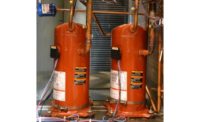Correctly diagnosing system faults is important to profitable service calls and to the reputation of technicians and their companies. Misdiagnosing a system can be problematic for technicians, their companies, and their customers. As a service technician, it is a good practice to try to verify that the diagnosis is correct. This is not always possible or easy to achieve, but it should be attempted. There are two basic ways to verify a diagnosis: 1) when possible, the suspect component can be temporarily jumped out, or 2) additional testing can be done to verify the findings.
Defective controls are the easiest to verify. Simply jumping out the suspect control will verify if it is the problem. Be careful — not all control components can be left jumped out. This is especially true of any safety control. It may be jumped out for a very short period just to verify the diagnosis, but it should not be left that way. Use good judgment when jumping out any component.
Mechanical components are more difficult to verify, since they cannot be simply jumped out; however, a technician can verify a diagnosis by performing an additional test. For example, if a single-phase compressor fails to start and the technician has measured the correct voltage and resistances at the compressor, it may be determined that the compressor has internally locked up. This may well be true. However, the starting relay or start capacitor (where used) may also cause the compressor not to start. The technician should attempt to start the compressor with a starting kit. If the compressor still fails to start, then the technician can be assured that it is defective.
Repairing refrigerant leaks and verifying that the system is leak-free is important but not always easy. Sometimes there is more than one refrigerant leak in a system, and if one leak is found and repaired and the system charged, the technician could soon be back on the job again, looking for another leak. This is costly for the technician and the customer.
When possible, a standing pressure test can be performed to verify the system is leak-free. After repairing the initial leak, leave the system pressurized with nitrogen and observe the pressure over a period of time. If the pressure remains the same, the system can be assumed to be leak-free. If the pressure drops, there is another leak in the system. Although this is a great test to verify the system is leak-free, it is not always practical. There may not be time to run this test, because the system may need to be back up and running as soon as possible.
Verifying the diagnosis will take additional time, but this is time well spent. It will actually save time and money for both the technician and the customer. It will reduce the number of callbacks and also reduce the replacement of non-defective components on the job. It will also allow technicians to leave the job with peace of mind knowing they have made a correct diagnosis.
See more articles from this issue here!











